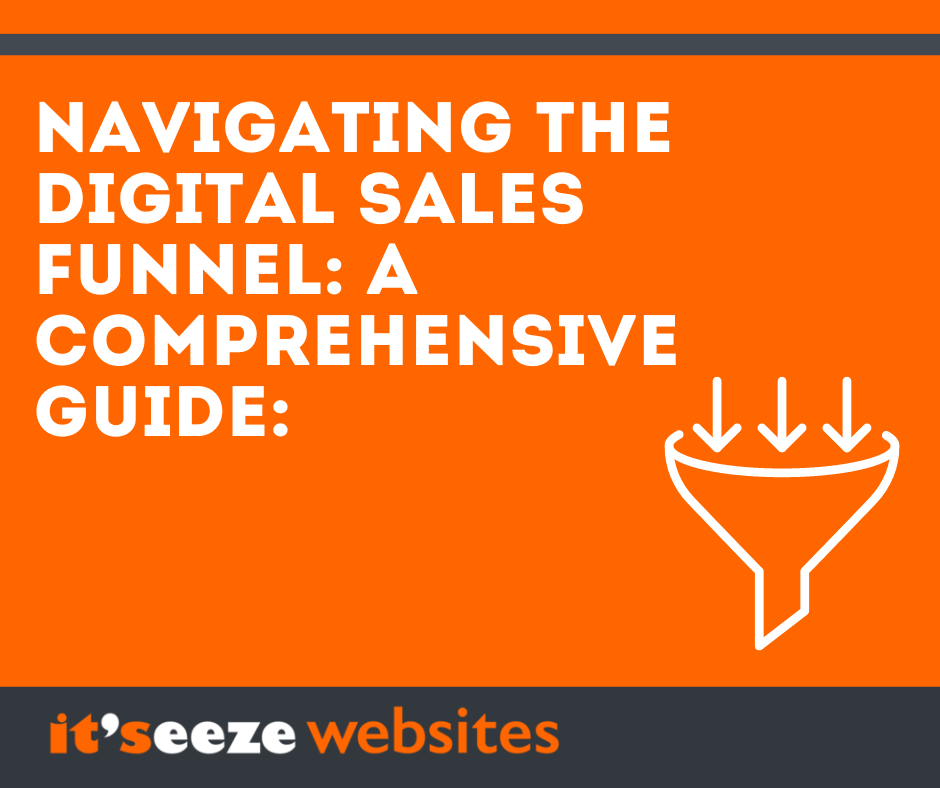Navigating the Digital Sales Funnel: A Comprehensive Guide
Posted on 22nd August 2023 at 07:49
In the dynamic landscape of online business, establishing a strong digital sales funnel has become an essential strategy for success. A digital sales funnel, often referred to as a marketing funnel, is a systematic approach that guides potential customers through a series of stages, from awareness to conversion. In this blog, we'll delve into the intricacies of digital sales funnels, exploring their importance, components, and best practices.
Understanding the Digital Sales Funnel:
Imagine a funnel – wide at the top and narrow at the bottom. The digital sales funnel follows a similar concept, comprising multiple stages that filter out potential customers as they progress towards making a purchase. The key stages of a typical digital sales funnel include:
Awareness: At the top of the funnel, your goal is to create awareness about your product or service. This is where you attract a broad audience through various channels like social media, content marketing, SEO, and paid advertising. The aim is to capture the attention of individuals who might be interested in your offerings.
Interest: As potential customers become aware of your brand, you need to pique their interest. This stage involves providing valuable content, such as blog posts, videos, and webinars, to educate your audience about their pain points and how your solution can help.
Consideration: In this stage, potential customers are actively considering their options. Provide more in-depth content, case studies, and testimonials to showcase the benefits of your product or service. Address their concerns and offer insights that help them make informed decisions.
Intent: At this point, your audience has expressed a clear intent to make a purchase. This is where you present compelling offers, such as discounts, free trials, or limited-time deals, to nudge them closer to conversion.
Conversion: The narrowest part of the funnel is where the actual transaction takes place. This could be a purchase, signing up for a service, or any other desired action. Make the process seamless and user-friendly to minimize friction.
Loyalty: After conversion, your relationship with the customer doesn't end. It's crucial to nurture and build loyalty through post-purchase follow-ups, personalized recommendations, and excellent customer support.
Advocacy: Satisfied customers can become your best advocates. Encourage them to share their positive experiences through reviews, testimonials, and referrals, thereby bringing in new potential customers to the top of the funnel.
Components of an Effective Digital Sales Funnel:
Compelling Content: High-quality, relevant content is the foundation of a successful funnel. It should address the needs and pain points of your target audience at each stage.
Lead Magnets: These are valuable resources, such as eBooks, whitepapers, or free courses, offered in exchange for contact information. They help build your email list and nurture leads.
Email Marketing: A powerful tool for nurturing leads, email campaigns can deliver targeted content, exclusive offers, and personalized recommendations based on user behavior.
Landing Pages: These focused pages are designed to capture visitor information or direct them toward a specific action, aligning with the stage they are in.
Sales Pages: Once users are ready to convert, your sales page should provide clear information about your product/service, benefits, pricing, and a compelling call to action.
Automated Workflows: Use marketing automation to guide leads through the funnel, sending them the right content at the right time based on their interactions and behavior.
Best Practices for Building and Optimizing Digital Sales Funnels:
Know Your Audience: Understand your target audience's pain points, preferences, and behaviors to tailor your content and messaging accordingly.
Simplify the Journey: Keep the user experience smooth and intuitive. Eliminate unnecessary steps that might deter potential customers.
Test and Optimize: Continuously monitor your funnel's performance and test different elements – headlines, visuals, calls to action, etc. – to identify what works best.
Personalization: Leverage data to deliver personalized experiences. Use customer information to provide recommendations that resonate with their interests and needs.
Mobile Optimization: Ensure your funnel is optimized for mobile devices, as a significant portion of users browse and shop on smartphones and tablets.
Data-Driven Decisions: Base your strategies on data and analytics. Use insights to refine your approach and make informed decisions.
Conclusion:
In the realm of digital business, a well-constructed sales funnel can significantly enhance your chances of converting potential customers into loyal advocates. By understanding the stages, components, and best practices of a digital sales funnel, you can create a streamlined, effective process that guides users from the initial touchpoint to making a purchase. Remember, each business is unique, so tailor your funnel to your audience's preferences and behaviors for the best results.
Share this post:
